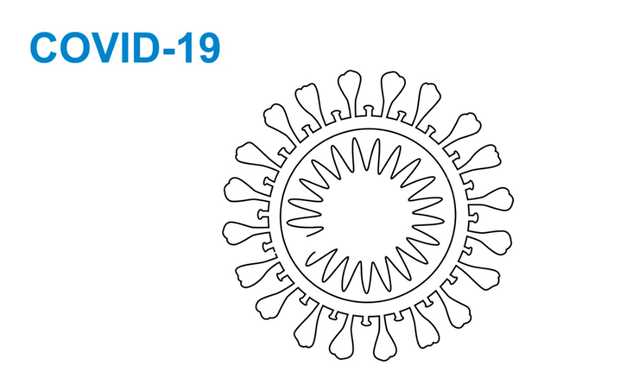
Author: Munir Karjaghli
Date of first publication: 23.03.2020
Last change: 15.06.2020
Mechanical ventilation guidelines - phenotypes A and BIn this article we outline the recommendations for the respiratory treatment of COVID-19 patients drawn from recent literature and guidelines issued by various organizations worldwide. They reflect the status as at the date of last change shown here.

Choices regarding supplemental oxygen delivery and providing invasive respiratory support are crucial, and may impact outcomes as well as the saturation of critical care beds (
Target SpO2 92%–95%, higher for emergency patients. Use supplemental oxygen therapy at 5 l/min and higher. Hygiene precautions are essential: HFOT (high flow oxygen therapy) and leaking NIV (noninvasive ventilation) interfaces may generate contaminated aerosols.
Before deciding to apply noninvasive therapies such as HFOT or NIV, consider their benefits versus the risk of airborne diffusion. These therapies may result in the widespread dispersion of exhaled air and infectious aerosols.
Known high failure rates in COVID-19 patients may be an additional argument against treating them with noninvasive therapies. Use HFOT and NIV in selected patients only, and closely monitor the patient situation for deterioration. Patients receiving a NIV trial should be in a monitored setting and cared for by experienced staff capable of endotracheal intubation, in case the patient deteriorates acutely or does not improve after about one hour. Patients with hemodynamic instability, multi-organ failure, or an abnormal mental status should not receive NIV.
When deciding whether to perform an endotracheal intubation:
It is preferable to perform intubation as an elective procedure, rather than waiting until it is an emergency (greater patient risk).
If the decision is made to inubate, ensure the minimum number of team members:
Additional considerations for intubation:
Before applying mechanical ventilation (MV), consider the following:
I. Carefully identify those patients in need of mechanical ventilation (MV).
II. Ensure correct phenotyping of patients according to the criteria shown below (proposed by Gattinoni et al.).
III. Select the ventilation strategy according to the phenotype.
The P/V Tool® Pro can be used to phenotype patients and assess lung recruitability.
| Type H phenotype | Type L phenotype |
|---|---|
| High elastance (low compliance) | Low elastance |
| High right-to-left shunt | Low ventilation-to-perfusion (V/Q) ratio |
| High lung weight | Low lung weight |
| High lung recruitability | Low lung recruitability |
For Type H, apply mechanical ventilation according to the current recommendations for treatment of ARDS patients:
1. Tidal volume: 4–6 ml/kg predicted body weight
2. Pplat < 30 cmH2O
3. Maintain the driving pressure (Pplat-PEEP) as low as possible (< 14 cmH2O)
4. Permissive hypercapnia
5. Higher PEEP (PEEP ≤ 15 cmH2O) settings may be beneficial in patients with moderate-to-severe ARDS
6. Recruitment maneuvers (RMs) are not routinely recommended in COVID-19 patients
7. RM and higher PEEP >15 can be beneficial in patients with the typical CT pattern of moderate-to-severe ARDS, with alveolar edema, obesity, decrease in chest wall compliance and high potential for lung recruitment
8. Prone positioning should be used only as a rescue maneuver
9. Avoid unnecessary disconnections of breathing circuits (if needed, put ventilator on standby / clamp endotracheal tube before disconnection) to ensure airborne protection and maintain PEEP
10. Use weaning protocols to reduce the duration of invasive mechanical ventilation, considering the following points:
11. Follow a conservative fluid management strategy for ARDS patients without tissue hypoperfusion
12. Closely monitor the cardiac function of the patient
The following applies for Type L patients:
1. For nonintubated hypoxic patients who are not yet breathless, the first step to reverse hypoxemia is through an increase in FiO2
2. For patients with dyspnea, several noninvasive options are available including:
Ensure close monitoring if noninvasive ventilation is used, as it may be associated with high failure rates and delayed intubation in a disease that typically lasts a few weeks.
3. Consider measurement (or estimation) of the work of breathing, by means of:
4. If inspiratory pleural pressures swings are greater than 15 cmH2O, the risk of lung injury increases and intubation should therefore be performed as soon as possible
5. Early intubation may avert the transition to the Type H phenotype
6. Adjust VT to 7-8ml/kg and RR to achieve an acceptable gas exchange. The high compliance results in tolerable strain without the risk of VILI
7. Prone positioning should be used only as a rescue maneuver8. PEEP should be reduced to 8-10 cmH2O, given that the recruitability is low and the risk of hemodynamic failure increases at higher levels
Full citations below: (
For additional information on COVID-19: